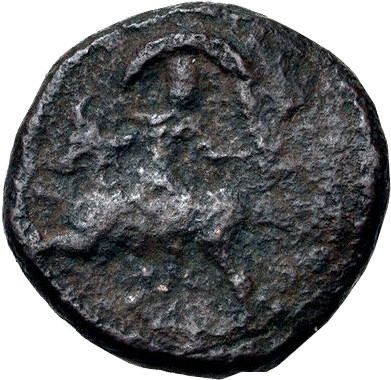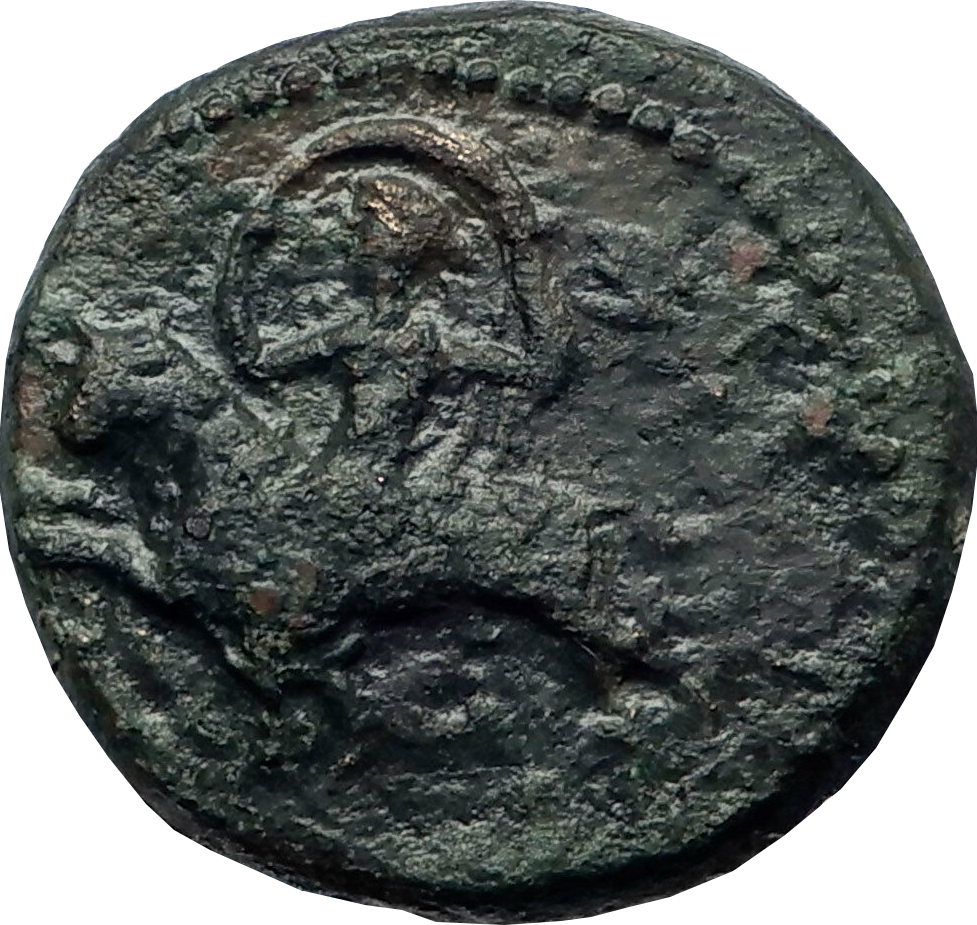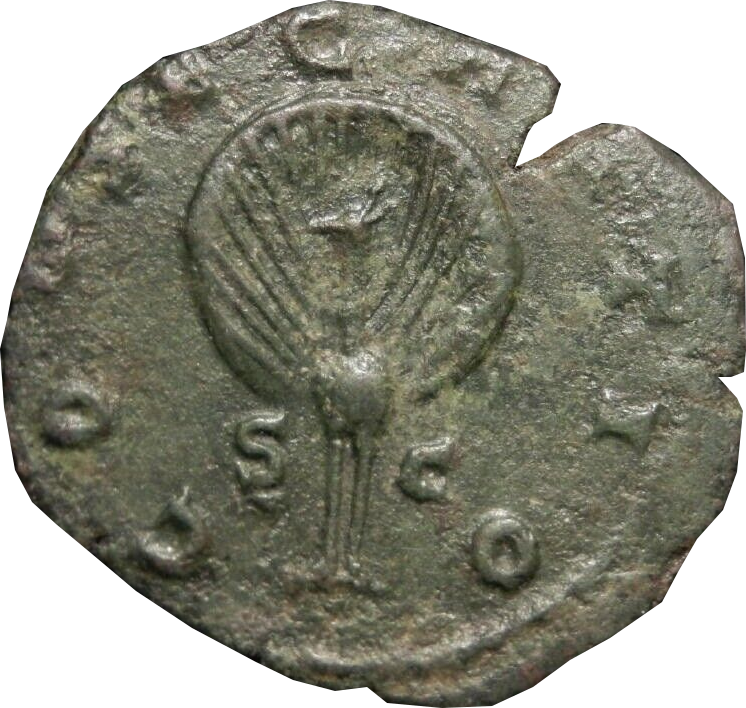Ancient Psychedelia: Alien Gods & Mushroom Goddesses
Online Book - Chapter 11, Page 184
Back to Online Book Mainpage / Next Page (Chapter 11, Page 185)
Early Greek coins from Crete from 220 BC, depict what numismatists describe as Zeus riding the bull. Above his head he has some kind of hat which gives his head a peculiar mushroom appearance (50b), but it becomes even more pronounced when we see coins from 41 AD, depict what numismatists would describe as Artemis, riding the bull instead, which might be described as a whip, but it creates the perfect mushroom shape for the head (50d).  R: (50d) Roman Claudius Amphipolis in Macedonia Artemis on bull c. 41 AD Hera, Zeus’s wife, was often called “cow-faced,” although her beauty was held to be extraordinary. Her sacred animals were the cow and the peacock. The peacock is represented on a Roman coin (49e). The peacock tail here occults the mushroom cap, while the body of the bird serves the function of the stem. (59) She was the daughter of Cronus and Rhea and she ruled over Mount Olympus as the Queen of the Gods. She was also called “the origin of all things.” As a cow-goddess she was a favorite of the "cattle-rich" people of Euboea. Hera was also called the “ox-eyed” in the following quotation from Homer’s Iliad: “He spoke, and ox-eyed lady Hera was seized with fear, and sat down in silence, curbing her heart. Then troubled were the gods of heaven throughout the palace of Zeus.” (60) Despite her being raped by Zeus, she remained a “virgin,” a symbolic trait she shares with all other goddesses. Goddesses are always virgins, a peculiar quality. They are of “virgin birth,” meaning they are birthed by virgins and when they give birth, they give birth to only virgins. I believe this is the reason we often hear about “virgin sacrifice,” when there never really was any, it was all mushroom mythology, where the worshiper would sacrifice the “virgin,” or mushroom. Hera is also associated with various healing plants. (61) According to Herodotus, Hera was originally borrowed from the Pelasgians. (62) Possibly the name “Hera” derives from Asherah, the ancient Semitic goddess. I speculate on this because all goddesses of the Greek pantheon derived from Semitic goddesses and Hera is part of the root word of Asherah, which is a common way names were recreated by succeeding generations. |
 (49e) Mortwn Diva Mariniana AE Sestertius Dionysus is said to be a god of “wine and revelry,” a fertility deity, sometimes represented by the phallus. He is probably the deity most easily identified with the mushroom at first glance. An evolution took place in his mythology which clearly went from mushroom deity to wine deity. He was said to be born from the thigh of Zeus after his mother Semele was struck by Zeus’s lightning. A clear case of matricide and the takeover of birthing roles at the same time. Ultimately though, to understand Dionysus in Greece, we need only to look at Attis, which we have already explored. The myth only changed slightly due to the fantastic stories which were created similar to the Mahabharata. We also see how the creation of the story of Dionysus’ birth from Zeus’s thigh coincides with the story of Eve being born from Adam’s rib. Both are patriarchal creation myths, in their infancy. Two of the epithets Dionysus went by were “pyrigenes” and “ignigenea,” both meaning “engendered by fire,” which implies the lightning bolt as the progenitor, (63) and I mentioned previously how the ancients had a belief that mushrooms were brought by the lightning, or celestial fire. Dionysus was another deity born fatherless, for he was originally a mushroom deity as well or “toadstool” god. Similarly represented by the toad, is Tlaloc in Veracruz, Mexico from the era of 400 BC -700 AD (84g, h, i). There was either a connection in ancient times that was made between the monsoons and raining seasons, with both frogs and mushrooms both growing at the same time or its possible, as the ancient people somehow discovered how to mix DMT and Harmaline to make Ayahuasca, they understood the properties of 5-MEO-DMT available in the Sonora Toad, DMT being in our brains and only a molecule away from psilocin. Either way, Graves made the case back in the 1940’s for this connection between Dionysus and the evolution of the wine god from an even more ancient mushroom or toadstool god. Graves claims that when the tyrants of Athens, Corinth and Sicyon legalized Dionysus worship in their cities, they limited the orgies by substituting wine for mushrooms and attaching the Mushroom-Dionysus myth to the Vine-Dionysus myth, who was now the son of Semele and Zeus, the god of thunder and lightning. (64) (59)https://greekgodsandgoddesses.net/goddesses/hera/; https://www.britannica.com/topic/Hera (60) Homer, Iliad, 1.565 (61) Language of the Goddess, p. 134 (62) Mythology and Symbols, p. 150 (63) White Goddess, p. 330 (64) ibid, p. 159 |
Go Back to Page 183